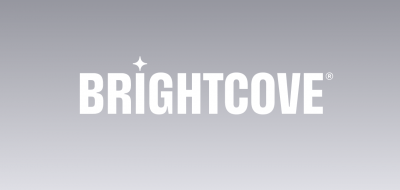OTT services have reached almost maximum market penetration in the US, with 99% of households subscribed to at least one streaming service. In fact, Americans subscribe to nearly three services each month, on average. With estimates putting OTT revenues at $228 billion by 2029, streaming is still growing around the world.
But with this growth comes pressure on newer content owners to acquire and retain subscribers and compete with the big players for OTT market share. The good news is that you can apply two fundamental OTT marketing strategies to drive results: search marketing and social media marketing.
SEARCH MARKETING
There are two pillars that support search marketing: Search Engine Optimization (SEO) and Search Engine Marketing (SEM).
SEO, or organic search, helps web pages rank on search engine results pages (SERPs). It requires an understanding of how search engines work and what words and phrases people are searching for, as well as the intent behind those searches. Incorporating these keywords into title tags, meta descriptions, and header tags, and then strategically throughout the body of web pages, helps them become more discoverable by search engines. Another component of SEO is making sure a site has a clear architecture and sitemap so search engines can easily find all of the content.
SEM, or paid search, puts web page ads at different positions on SERPs as sponsored search results for specific keywords and audiences. This strategy is typically employed in conjunction with SEO, especially for branded keywords, for campaign keywords, or to support weaker organic keywords. Likewise, because SEM strategies often use pay-per-click (PPC) ads, the performance results can inform SEO opportunities for organic keywords.
As an OTT marketing strategy, search presents a number of opportunities to reach your target audience. Here are a few aspects of your business that could benefit from it.
- Established programs. Original or licensed shows with a strong following likely also have a strong search presence. Of course, these keywords will be highly competitive and difficult to rank for, so research related longtail terms and create content from them. If you have the budget, you can also bid on the parent terms or on the brand names of competitor services offering the same licensed program.
- New or niche programs. Programs without a strong search presence require a different approach, so try researching their genres, themes, or well-known cast and crew. Creating content around terms like these will not only put you in front of the right audience, it will build awareness for them as well. You can take the same approach with paid search and bid on the strongest keywords.
- Service value props. The majority of search users are looking for content, just as most OTT services are providing content. So the previous two tactics will likely provide the best performance in search. That said, there are plenty of users who search for free, cheap, or ad-free services. If your service delivers on any of those queries, that’s a great opportunity for a paid search ad. Just remember, in this case, the user isn’t searching for content about your service. So don’t write an article about the benefits of ad-free experiences; direct them to a landing page where they can sign up or download your app.
Search marketing is table stakes for OTT businesses. In fact, lacking a digital footprint can raise questions in the minds of today’s consumers about the credibility of your service. Take the time to build and maintain your search presence.
SOCIAL MEDIA MARKETING
Social networks not only build audiences and drive conversations, they help test which types of offers and content will resonate most with your audience. Major media brands and smaller content owners alike stand to benefit from this kind of direct fan engagement, especially when it prevents costly mistakes.
But before posting trailers and waiting for comments, you need to respect the very real differences between the major social platforms. Each one draws a different audience with different behaviors and expectations. To reap the benefits social media can offer your OTT service, you need to adapt your marketing strategy for these audiences.
YOUTUBE
The undisputed king of social video, YouTube also holds the greatest share of all streaming video. And with its nearly 2.5 billion monthly active users, it commands an astounding 49% of all social media users globally. Given its reach, it’s an essential channel in any OTT marketing strategy.
Unlike other platforms, longform content does well on YouTube. Here, you can not only post trailers, you can publish full-length interviews, behind-the-scenes footage, and other related content. Just remember that it’s effectively the video extension of Google, so create and publish videos with SEO best practices in mind.
Beyond video search, creating channels and playlists on YouTube establishes a resource center for your audience that can bring them back again and again. Get their attention and build awareness through search, but keep them engaged with organized collections of content.
It’s also important to accept the social aspect of YouTube: user-generated content (UGC). Fans love posting their reviews, reaction videos, and compilations of new or popular shows, so engage with them. Like their videos and comment on them, even when they criticize your business.
Embracing fan-made content may seem like risky branding since you’re no longer “controlling the narrative,” but social media has been challenging this principle for years. Fans share their passionate opinions because they care, and by responding to their feedback, you can turn that passion into loyalty.
Instagram is a visual platform with 2 billion monthly active users worldwide. It also heavily caters to younger audiences, with 18–34-year-olds making up 61% of its user base. Most importantly for OTT businesses, nearly two-thirds of users are on the platform for entertainment purposes.
Posting teasers is preferable to full trailers on Instagram—like most social channels—but even better are short clips. Action sequences, punchlines, emotional dialogues, outtakes, sports highlights, news headlines… any of these could be posted as Reels. But the key is to tie them to trending conversations and hashtags beyond your brand.
Much of Instagram culture, and younger social media culture in general, is memes: repurposed content expressing everyday feelings and moments. A sports play might be memed for acing a difficult exam or a fight scene memed for how parents feel trying to dress a toddler. Your fans will happily scour your programs on their own, but you can give them a head start by meming current events with your memorable moments.
Chasing social meme trends may seem like a frivolous strategy (and to be clear, it must feel organic, on brand, and not overdone). But think about it this way: You’re connecting your content to your fans’ daily lives. You’re not marketing your programming or your service; you’re marketing your emotional relevance. And this goes a long way in building loyal audiences.
That said, you still need to make it easy for users to recognize your brand amidst the melange of memes. So be sure to promote new episode drop dates or airtimes with links to your service in your bio. For videos, you can do this through text overlays or end slates, and for images, you can add badges to carousel posts.
With more than 3 billion active users around the world, Facebook is where you’ll find the largest audience. It’s also the most popular social media platform for news, despite this being the third-most-common activity after messaging and posting content.
Think of Facebook as an extension of your PR strategy. Just like you need press releases to engage investors and the media, you need Facebook to engage your audience. Fans want to hear from you directly where they already are.
So unlike YouTube and Instagram, where videos and images are expected, Facebook can see success with longform text posts. Production diaries, service changes, and news or sports commentaries give fans valuable information they might otherwise have to find from third-party sources.
As far as video content, your OTT marketing strategy should strike a balance between longform video and meme culture. Facebook’s demographics skew older, so focus more on informational badges and highlight images (e.g., sports moments, on-set stills, or iconic scenes from licensed shows). Similarly, post teaser trailers, interview clips, and highlight reels rather than full-length content.
Of course, even with the most optimized content strategy, organic posts on Facebook are challenging. While they can be extremely engaging and far reaching, they almost always succeed on a pay-to-play model. For any of these recommendations to work, prioritize bigger, standalone content pieces that you can promote and turn into campaigns.
SOCIAL MARKETING MEASUREMENT
Acquiring more viewers is the objective of any OTT marketing campaign. It’s critical to measure your campaign tactics and understand what content and channels are most effective. That’s why many businesses rely on social management tools. Like web analytics for search marketing, they can aggregate the performance of your content across multiple properties.
Your media business is unique, and some of our generalizations about social marketing may not hold true for you. The two biggest variables are your brand (voice, tone, and values) and your audience (preferred platforms and content). So don’t take our word for it; test it yourself.
Social tools like Hootsuite and Sprinklr allow you to manage and publish content on several platforms and analyze the results. Maybe full-length trailers always work for you—no matter the channel, or maybe meme culture is a step too far for your audience’s tastes. With tools like these, you can figure that out quickly so you can focus on creating the content that does convert.
To make measuring social content easier, Brightcove integrates directly with most popular social media platforms and management tools. Just as video is key to your business, it’s key to your OTT marketing strategy. So keep your data honest, your videos managed, and your viewers will grow.



